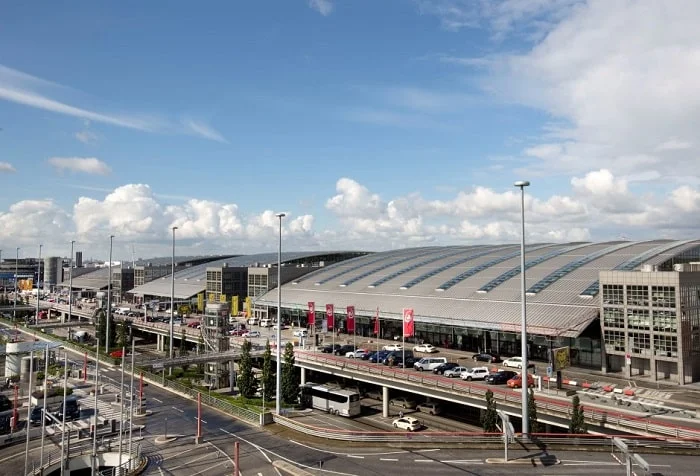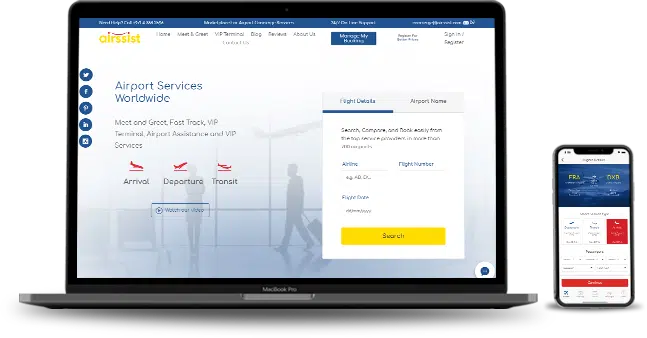Table of Contents
Navigating a large airport can sometimes feel like trying to solve a complex puzzle. With signs pointing to terminals, concourses, and gates, it’s easy to get turned around. While the terms “terminal” and “concourse” are often used interchangeably, they refer to distinct parts of an airport with different functions. A terminal is the main building for passenger processing, including check-in and security, while a concourse is a specific section of the terminal building where passengers wait for and board their flights.
Understanding this key difference is the first step to mastering airport navigation and ensuring a stress-free journey. This guide will break down the specific roles of each area, highlight their unique features in a simple comparison table, and answer common questions to make your next trip smoother.
What is an Airport Terminal?
An airport terminal is the central hub of an airport’s passenger-facing operations. Think of it as the main building you enter when you arrive at the airport. It’s the starting and ending point of your journey, housing all the essential facilities required for processing passengers before they fly and after they land. This is where airlines have their check-in desks, baggage drop-off counters, and ticketing services.
After checking in, passengers proceed through security screening, which is also located within the terminal. The terminal building is the gateway to the rest of the airport, connecting landside areas (publicly accessible) with airside areas (secure zones). Terminals also host arrival halls, baggage claim carousels, and customs and immigration services for international flights.
Terminal: An airport’s central area
Meaning and Function
An airport’s terminal serves as the primary hub where travellers check in for flights, go through security, and get their checked luggage. It serves as the hub for passenger services and frequently has extra features to make your trip more enjoyable.
Terminal Types
A terminal at an airport may be one of several types:
Domestic Terminals: For travel within a single nation.
For flights abroad, use international terminals.
Satellite terminals: Independent structures linked to the main terminal; frequently used to manage excess traffic or particular flight requirements.
Standard Configuration
The typical layout of a terminal consists of:
- Check-in Counters: This is where you leave your checked bags and obtain your boarding pass.
- Passengers and carry-on luggage are inspected at security checkpoints.
- Where you pick up your bags when you arrive is known as the baggage claim area.
- Retail spaces and food courts: Providing places to eat and shop.
What is a Concourse in an Airport?
Once you clear security, you move into the airside part of the airport, which is where you will find the concourses. An airport concourse is a long, pier-like extension of the terminal building that contains the departure gates. Its primary function is to provide a space for passengers to wait before boarding their flights. Concourses are designed to accommodate a large number of people and provide access to multiple gates, which are the doors leading to the aircraft.
In many modern airports, concourses are lined with amenities designed to make the waiting period more comfortable and enjoyable. These often include restaurants, cafes, duty-free shops, retail stores, and passenger lounges. In smaller airports, the terminal and concourse might be one and the same, but in larger international hubs, there are often multiple concourses connected to a central terminal building by walkways, trains, or shuttle buses.
Concourse: A Terminal’s Extension
Definition and Objective
A concourse is a section of a terminal or its linked area used mostly for boarding gates and associated amenities. Its purpose is to oversee the movement of travellers to their designated gates and offer extra facilities.
Goal and Characteristics
Concourses are used for:
Provide Boarding Gates: Passengers board their aircraft through a number of gates that are normally present in each concourse.
Provide Extra Services: Concourses frequently have stores, eateries, and lounges to accommodate patrons while they wait.
Distinctions Among Types of Concourse
Services and concourse sizes can change:
- Size: While some concourses are large and can accommodate many gates and facilities, others are small and can only service a small number of gates.
- Location: Concourse sites can vary; some are close to the terminal, while others need to be reached by automated trains or shuttles.
- Services: Although every concourse has boarding gates, each airport has a different assortment of facilities and services.
Crucial Distinctions Between Concourses and Terminals
Terminal vs Concourse: A Comparison
To make the distinction clearer, here is a side-by-side comparison of the key functions and features of an airport terminal and a concourse.
|
Feature |
Airport Terminal |
Airport Concourse |
|---|---|---|
|
Primary Function |
Passenger processing (check-in, security, baggage claim) |
Passenger waiting and boarding |
|
Location |
The main building connecting landside and airside |
Airside (secure area), attached to the terminal |
|
Key Facilities |
Ticketing desks, check-in counters, security checkpoints, customs, baggage claim |
Departure gates, waiting areas, passenger lounges |
|
Passenger Flow |
Manages both arriving and departing passengers |
Primarily serves departing passengers |
|
Amenities |
Arrival/departure halls, airline offices, car rental counters |
Retail shops, restaurants, duty-free stores, charging stations |
Dimensions and Purpose
Terminals: Bigger buildings that act as the primary hub for passenger services such baggage claim, security, and check-in.
Concourses: Usually smaller sections designed to give passengers access to boarding gates and other facilities.
Whereabouts
The main structure at an airport where most passenger encounters start and finish is called a terminal.
Concourses: Aerial sections of the terminal linked by tunnels or walkways that are mostly used for passenger boarding and associated services.
Services
Terminals: Provide a wide range of services, including as customer support, baggage claim, and ticketing.
Concourses: These areas may provide dining and shopping alternatives for those waiting, but their primary focus is on boarding processes.
Handling Concourses and Terminals
Advice on Interpreting Airport Signage and Maps
Examine the Airport Layout: For information on maps and layout, visit the airport’s website or mobile app prior to your trip.
Pay attention to the signage: Check-in counters, gates, and other important locations are typically indicated by clear, colour-coded signs at airports.
Locating Your Concourse or Gate
Use the airport monitors: They offer up-to-date information on gate positions and departure times in real time.
Ask for Directions: If you’re not sure where to go, don’t be afraid to ask airport employees for help.
Making Use of Information Desks at Airports
Information Desks: Dispersed over the terminal, these desks offer assistance with directions, flight details, and additional questions.
The Relationship Between Terminals and Concourses
Terminals and concourses work together to create a seamless flow for passengers. The terminal acts as the control center, processing passengers and directing them towards their departure point. The concourse serves as the final waiting area before that departure. In large airports like Hartsfield-Jackson Atlanta (ATL) or Chicago O’Hare (ORD), a single terminal might connect to several different concourses, each serving various airlines or destinations.
This modular design allows airports to expand and manage a high volume of air traffic efficiently. Passengers might need to take an automated people mover or an underground train to travel from the main terminal building to their designated concourse. Understanding your flight’s designated terminal and concourse is crucial for planning your time at the airport and avoiding a last-minute rush to the gate.
Streamline Your Airport Journey
Knowing the difference between a terminal and a concourse can save you time, but navigating a busy airport still comes with challenges. From long lines at security to the rush of finding your gate in a sprawling concourse, the process can be stressful. This is where an airport concierge service can transform your travel experience.
Imagine having a dedicated agent from airssist meet you at the curb, assist with your luggage, and guide you through every step. Enjoy fast-track access through check-in and security, and let your agent escort you directly to your gate or a premium lounge in the concourse. With airssist, you can bypass the usual airport hassles and focus on what truly matters—your journey.
Frequently Asked Questions (FAQs)
Q: Can a terminal have multiple concourses?
A: Yes, large airports often have one main terminal connected to several concourses. Passengers may use walkways, trams, or shuttle buses to move between the terminal and their departure concourse.
Q: Is the gate in the terminal or concourse?
A: The departure gate is located in the concourse. The concourse is the specific part of the airport building where passengers wait before boarding their flight at their assigned gate.
Q: Why do some airports only have a terminal and no separate concourse?
A: Smaller airports with fewer gates often have a single building where check-in, security, and boarding gates are all located in one integrated area. In this case, the terminal building itself serves as the concourse.
Q: Are concourses always inside the secure area?
A: Yes, concourses are located “airside,” which means you must pass through a security checkpoint in the terminal to access them. All departure gates are situated within this secure zone.
Note: Please note that the information on this page is generic & subject to change due to fluctuations in airport services. Kindly confirm service availability with our team, as offerings may vary daily.

 French | Français
French | Français Spanish | Espana
Spanish | Espana German | Deutch
German | Deutch Arabic | العربية
Arabic | العربية Chinese | 中文(简体)
Chinese | 中文(简体) Japanese | 日本語
Japanese | 日本語



